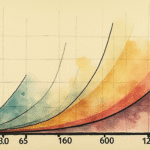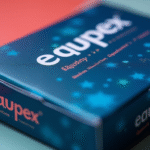Mexico’s Automotive Industry Reflects Consumer Confidence
On September 3, the Mexican National Institute of Statistics and Geography (Inegi) released data that, while seemingly routine, speaks volumes about the true state of Mexico’s economy. In August, light vehicle sales dropped by 3% annually, with a total of 124,167 units sold. Between January and August, the accumulated decline was 0.7%, with 957,993 vehicles sold.
The automotive industry’s significance extends beyond its contribution to the GDP and exports. It also mirrors family confidence in their ability to take on medium-term and long-term debts. A fall in sales indicates that many households are hesitant to commit to expensive credits, revealing uncertainty and a lack of clear expectations for the immediate future.
Investment Data Signals Weak Business Confidence
In addition to the automotive sales data, investment figures paint a concerning picture. In June, fixed investment decreased by 1.4% from the previous month and fell by 6.8% annually. This indicator measures the purchase of machinery, equipment, and construction—essentially, businesses’ bets on future growth. Weak investment suggests that despite official rhetoric, companies still don’t see clear conditions for expanding their productive capacity.
Without investment, sustainable growth and quality jobs are unattainable. Thus, the decline in investment should be more concerning than any other figure published recently.
Modest Private Consumption Growth
Private consumption showed modest growth, increasing by 0.8% in June compared to the previous month and by 1.1% compared to June 2024. This can be interpreted as a positive sign, albeit barely sufficient to keep the domestic market moving. In August, the Consumer Confidence Index rose for the second consecutive month to 46.7 points, its highest level since December 2023.
This is an encouraging, though still fragile, signal, as it has accumulated eight annual declines. In other words, the economy’s current support system functions, albeit at a slow pace with risks of stalling if more adverse factors emerge.
Overall Economic Outlook
Collectively, the data confirm what has been noted for months: Mexico’s economy relies more on inertia than solid drivers. Private consumption prevents a greater downturn but remains fragile; investment weakens, and household confidence in the future starts to wane. This anticipates a low-growth scenario for the remainder of 2025 and possibly 2026, especially if the international environment worsens with additional tariffs from Donald Trump, reduced global dynamism, and new trade tensions.
Government’s Challenge Amidst Economic Uncertainty
In this context, President Claudia Sheinbaum insists that “we are doing well and will do even better.” It’s understandable, as every leader needs to project optimism to maintain social and business confidence. However, Inegi’s numbers suggest caution. They don’t contradict the official narrative but show that the economy advances at a much slower pace than suggested.
The challenge for her government is to translate political optimism into tangible results that convince not only markets but also families and businesses currently hesitant to invest and consume.
Key Questions and Answers
- What do the recent Inegi data reveal about Mexico’s economy? The data indicates that while Mexico’s economy is not in freefall, it is growing at a slower pace than officially projected. The automotive industry’s sales decline and weak investment figures suggest that consumer confidence and business optimism are waning.
- How does the automotive industry reflect on Mexico’s economy? The automotive sector is crucial as it not only contributes to the GDP and exports but also mirrors family confidence in taking on long-term debts. A drop in sales implies that households are cautious about expensive credits, indicating uncertainty and a lack of clear future expectations.
- What do the investment figures tell us about businesses’ outlook? The decrease in fixed investments suggests that, despite official optimism, businesses remain uncertain about expanding their productive capacity. Without substantial investment, sustainable growth and quality job creation are unachievable.
- How does private consumption paint the current economic picture? Private consumption has shown modest growth, barely sufficient to maintain the domestic market’s momentum. The consumer confidence index has risen, but it remains fragile following eight consecutive annual declines.
- What does this mean for Mexico’s economic future? The current data suggest a low-growth scenario for the remainder of 2025 and possibly 2026, especially if international conditions worsen. The government’s challenge is to convert political optimism into tangible results that convince both markets and citizens.






